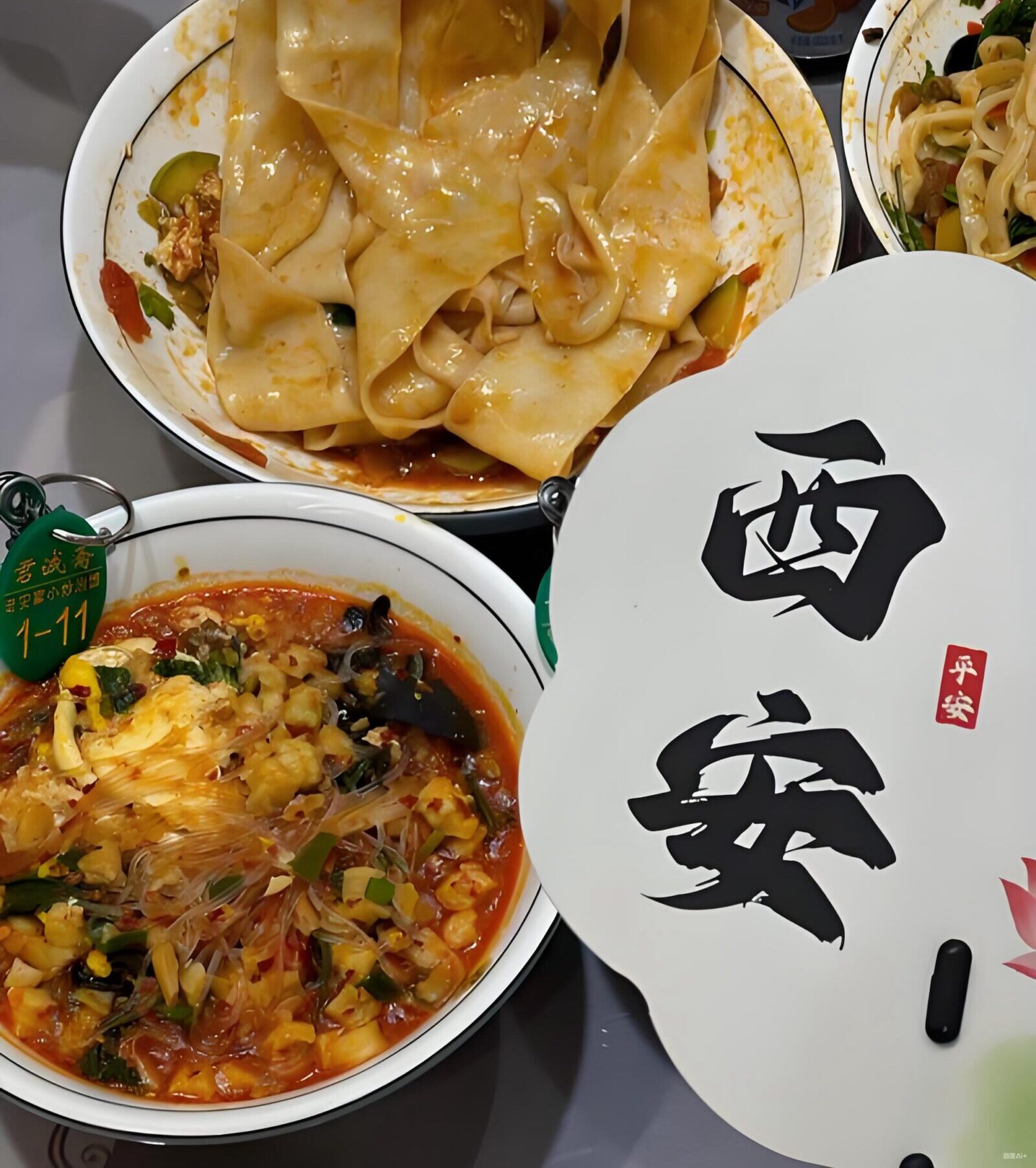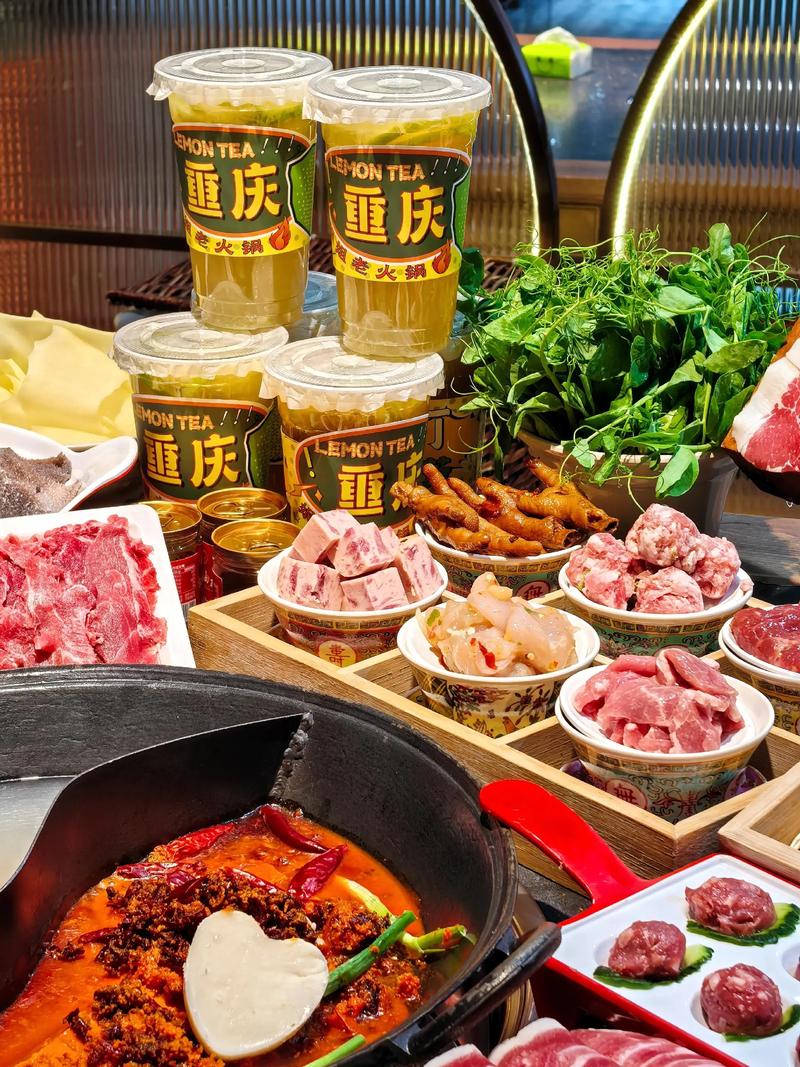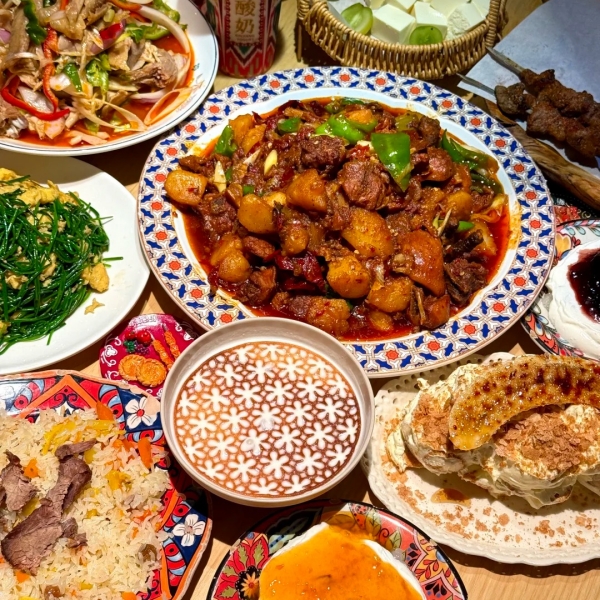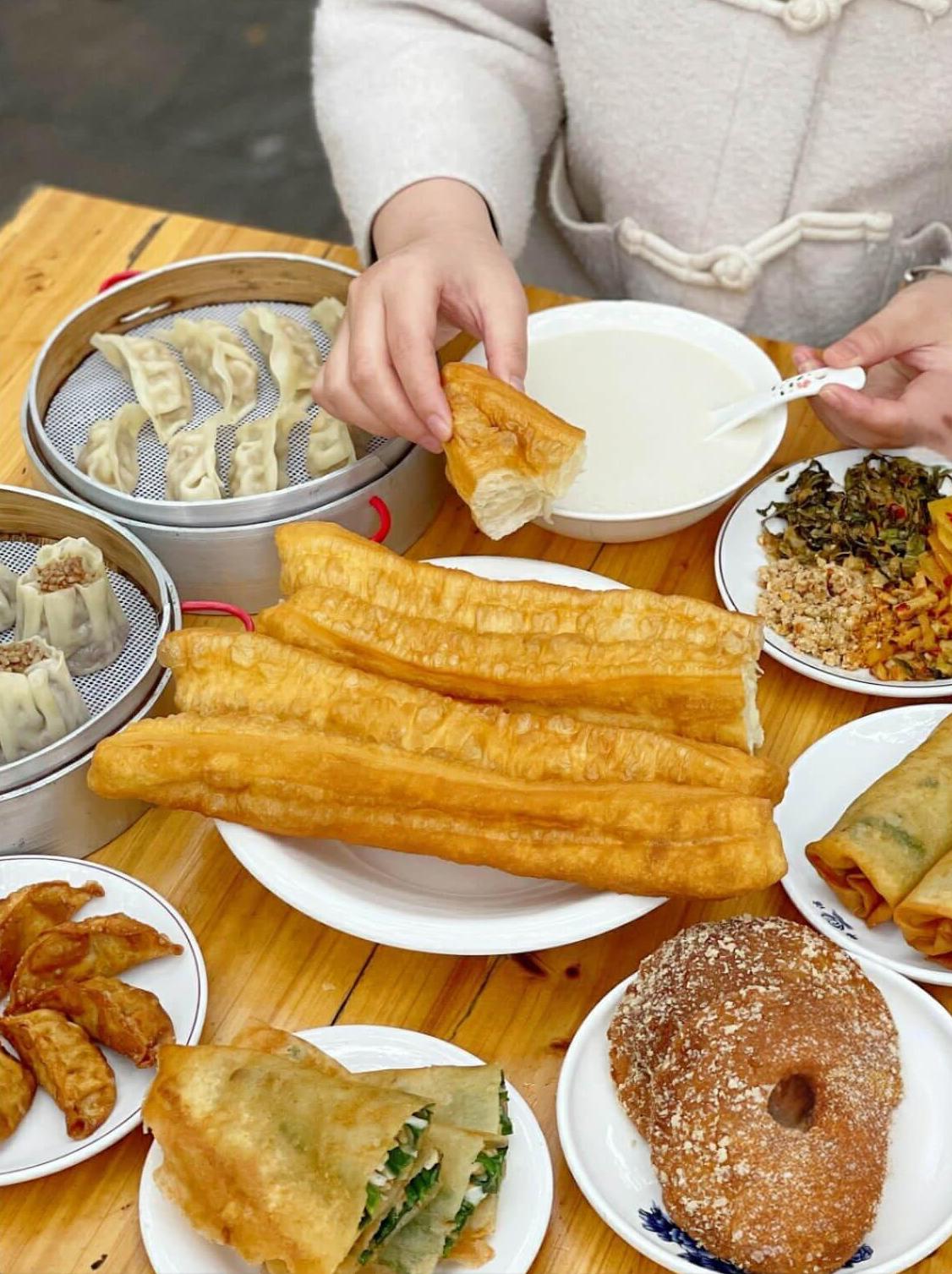
Chinese Breakfast
Forget your cereal or hotel cornflakes—Chinese breakfast doesn’t play that game. Here it’s fried, steamed, slurped, and shared, from a corner stall serving youtiao to a teahouse stacked with dim sum. It’s the kind of morning spread that makes you realize toast was never enough.
Why Chinese Breakfast Is More Than Just a Meal
Food wakes China up. With the first light of day, we find itinerant vendors pushing their hand carts to street road corners. Hotel kitchens sending up a train of steaming food.
While waiting in line for his favorite early-morning tidbits, a local is already nibbling one. For visitors, that first breakfast in China isn’t only about filling the stomach but also a way to see how people live. Whether sipping soy milk on the run or enjoying dim sum with endless tea refills, breakfast feels like a passport through countless tastes and customs.
A Morning Scene You Won’t Forget
Step into a Chinese city at dawn and you’ll feel it right away. Long queues form at food stalls, steam rises from bamboo baskets, and the nutty scent of soy milk lingers in the air.
Breakfast here is not just about eating—it’s how the city wakes up. Office workers rush by with buns, students clutch hot soy milk, and elders linger over bowls of congee. It’s a rhythm of life, not just a meal.
Breakfast Traditions Across China
In northern China, wheat dominates the table—thick flatbreads, buns, and chewy noodles. Down south, rice takes the lead with noodles, tofu pudding, and light soups. Some say you can taste geography in breakfast. What’s on the plate depends on crops and climate.
For travelers, no two cities feel the same in the morning. In Xi’an, you might grab a meat-filled flatbread. In Guangzhou, it’s a basket of shrimp dumplings. This diversity makes breakfast one of the most exciting parts of travel.
Must-Try Chinese Breakfast Foods for Foreign Visitors
Soy Milk and Youtiao: The Talked-About Combo
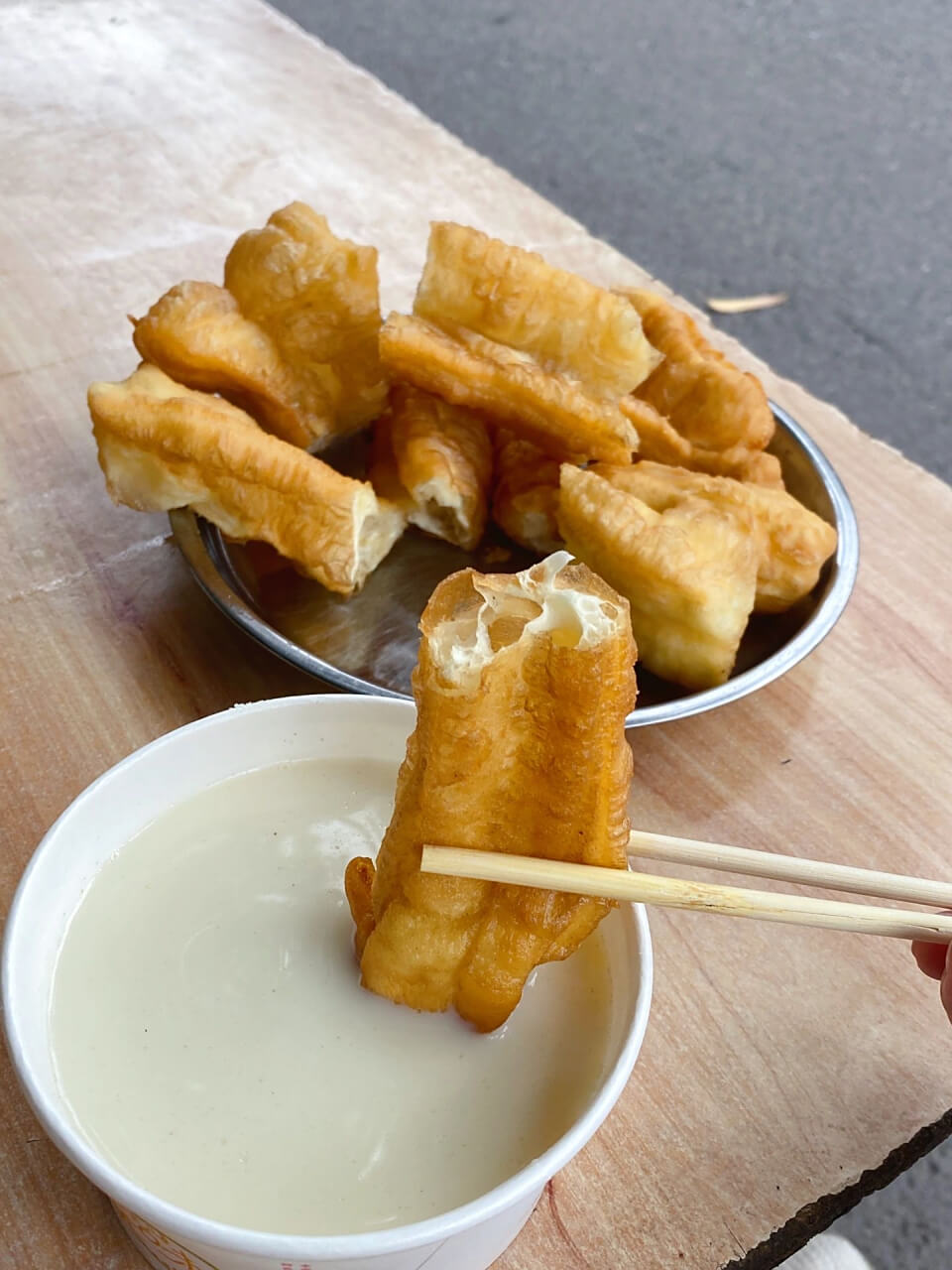
Soy Milk and Youtiao
Order a hot soy milk (doujiang 豆浆) with a golden fried dough stick (youtiao 油条) and you’ll instantly earn local approval. It’s like Paris with coffee and croissants.
Vendors usually pack it in plastic bags or paper cups, costing only ¥5–8. Dip the crispy dough into the soy milk and the texture hits just right. Many foreigners are surprised that soy milk can be savory, not sweet, but that’s part of why it’s a classic.
For flavors of the capital, Top Local Delicacies to Try During Food Tours in Beijing has the must-try picks.
Steamed Buns and Mantou: Stories from the Basket
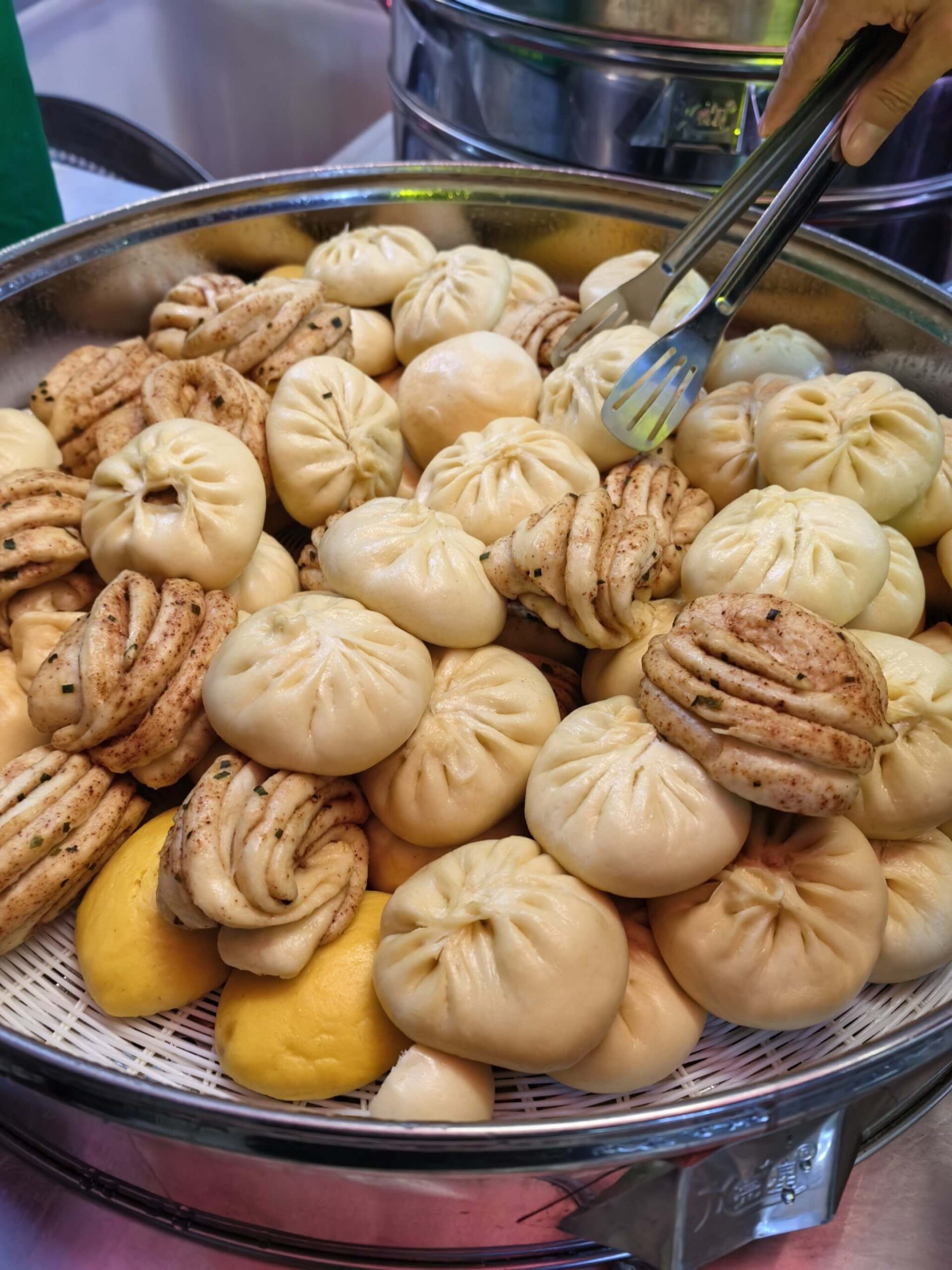
Steamed Buns and Mantou
At subway exits, bamboo baskets pile high with baozi (包子)—stuffed with pork and cabbage, red bean, or even custard. Mantou (馒头), plain steamed buns, look simple but are a staple in northern homes.
They are often paired with pickles or soy sauce. Prices are friendly, usually ¥2–4 each. A common mistake is buying too many—they look small, but two can fill you up.
If you’re curious about Shanghai’s street eats, this Shanghai Food Blog: A Guide to Eating Like a Local is worth a look.
Congee and Side Dishes: Comfort in a Bowl

Congee (粥 zhōu) is rice cooked down until nearly creamy. Some versions stay plain, others add salted egg, peanuts, or fermented tofu. It’s gentle on the stomach, often the go-to after long train rides or late-night hotpot. In coastal cities, you’ll find seafood congee with shrimp or fish. A bowl costs ¥6–10, simple yet satisfying.
For something more rustic and regional, check out our Anhui Cuisine Travel Guide.
Jianbing and Street Pancakes: On-the-Go Breakfast
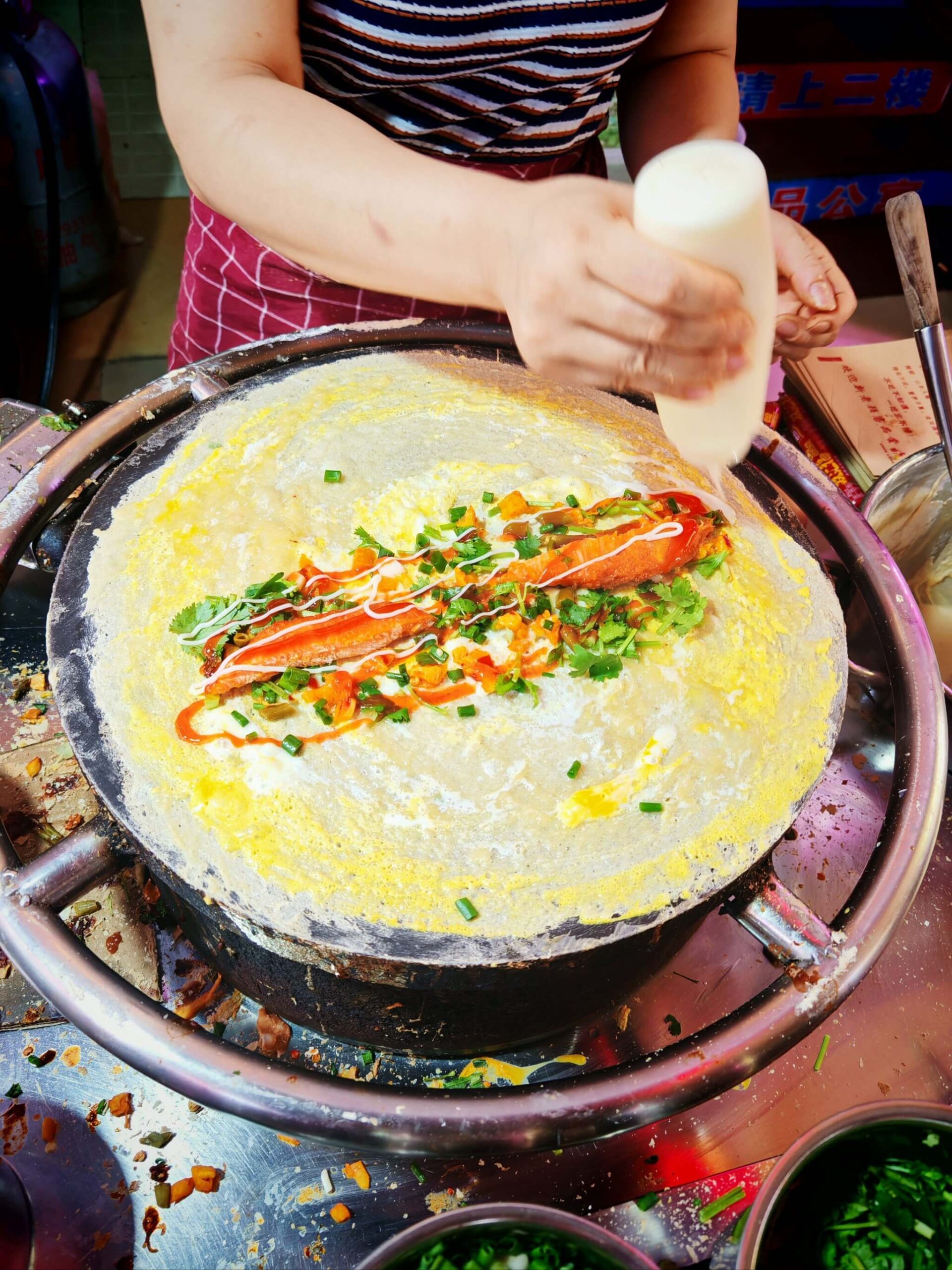
Jianbing and Street Pancakes
In Beijing or Tianjin mornings, listen for the sizzle on hot griddles. Jianbing (煎饼) is a thin pancake rolled with fried crackers, scallions, egg, and chili sauce.
Office workers eat it on the move, phone in one hand, pancake in the other. It costs about ¥8–15 and fills you up like a sandwich. But beware—the spice can hit harder than expected.
Dim Sum and the Cantonese Tea Culture
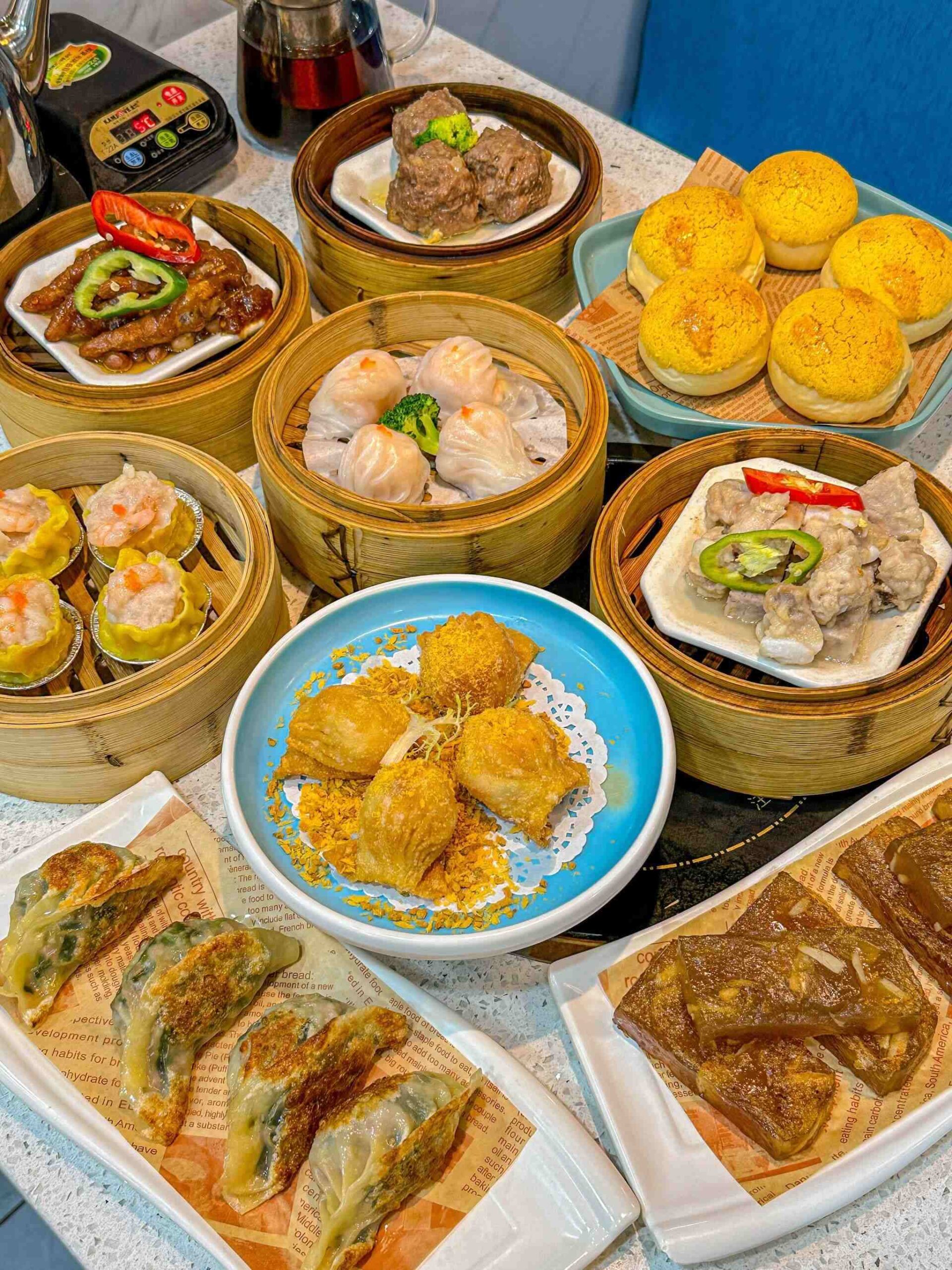
Dim Sum and the Cantonese Tea Culture
In Guangzhou or Hong Kong, breakfast stretches into lunch. Locals call it yum cha (饮茶). Tea is just the companion—food is the star.
Shrimp dumplings, siu mai, rice rolls, and turnip cakes arrive stacked in bamboo steamers. It’s a social affair, often lasting hours. Foreigners may find the ordering style tricky—just point to what you want from rolling carts.
Prices vary, but a mid-range tea house averages ¥50–100 per person. The atmosphere, though, is priceless.
Heading south? 7 Unmissable Things to Do in Guangzhou will take you straight to the city’s food markets.
How to Order Chinese Breakfast Without Stress
Reading Pinyin, Odd English, or Only Picture Menus
Many stalls lack English menus. Sometimes you’ll see pinyin with odd spellings like “Doujiang milk” or “Oil Stick Bread.” Other times, only photos on the wall.
Don’t panic—even locals point to order. Trying to say the name, even imperfectly, usually earns a smile from the vendor.
Paying with WeChat or Alipay: Don’t Fumble at the Counter
Cash is vanishing fast. Most stalls only take QR codes. Luckily, foreigners can now use Alipay Tour Pass or link international cards to WeChat Pay.
When the vendor shows their code, just scan or present yours. The common mistake? Tourists still digging for coins while the line grows. Set up payment before you head out—you’ll thank yourself.
Common Pitfalls Foreigners Face at Breakfast Stalls
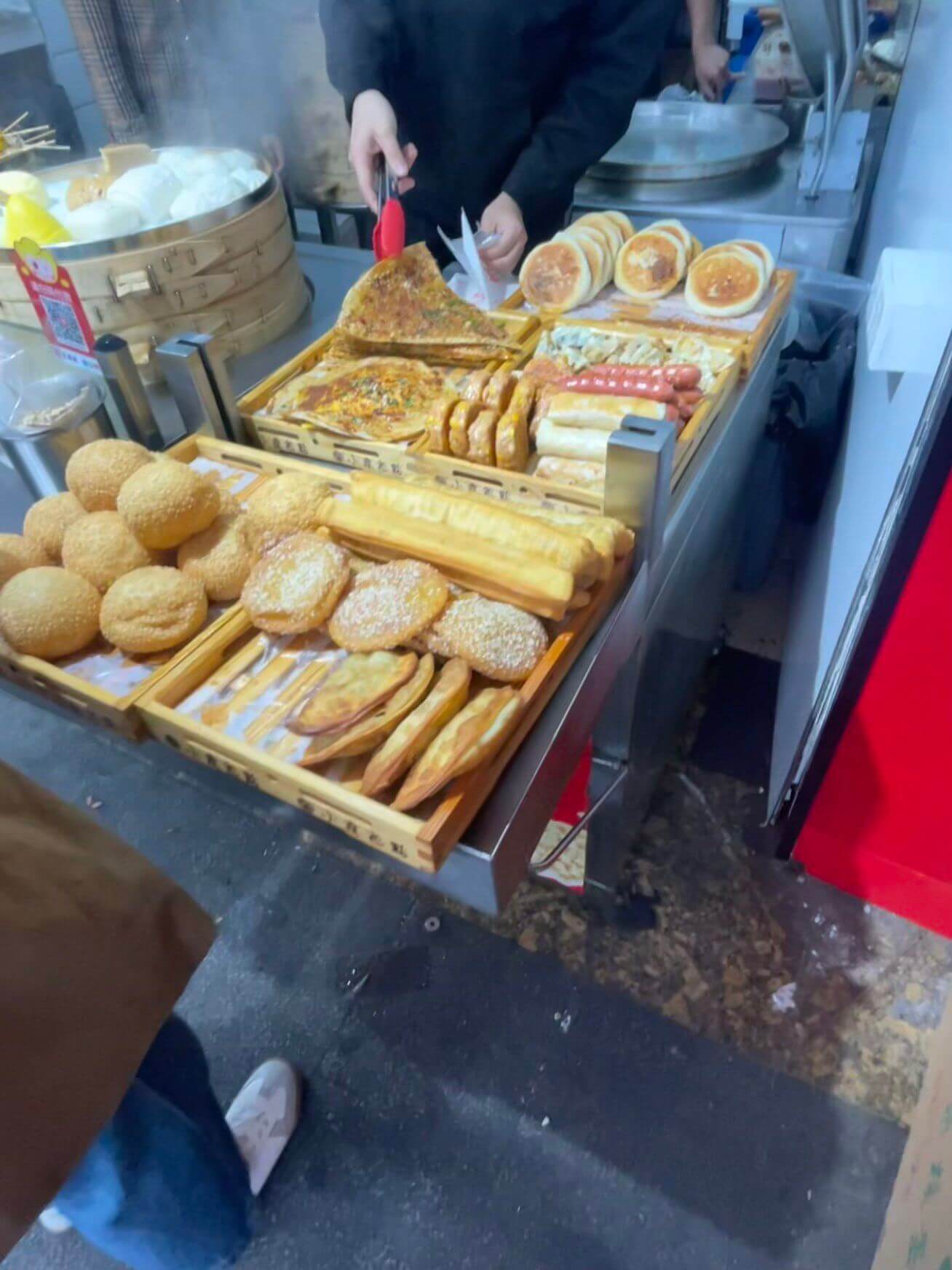
breakfast stall
Tourist Street Prices vs. Local Prices
On Nanjing Road in Shanghai, a fried dumpling may cost triple what it does in a back alley. Tourists often assume it’s normal—it’s not.
If a bun costs ¥12, be cautious; locals usually pay ¥3–4. When unsure, check Dianping or even Ctrip for reference prices on street food.
Spicy Surprises and Local Flavors That Shock First-Timers
Breakfast isn’t always mild. In Chongqing, noodles at 9 a.m. can leave your tongue numb. In Xi’an, sour-heavy broths may feel unusual. Many visitors waste food because they weren’t ready. The trick: order small portions, share if unsure. Chinese breakfasts reward curiosity but punish picky eaters.
Which Chinese Breakfast Fits Different Travelers
Budget Backpackers and Street Food Lovers
If you love cheap and authentic eats, breakfast is heaven. For under ¥20, you can try three or four items. Stalls open at sunrise, and even the queue feels like part of the fun. Many backpackers call breakfast the highlight of their trip because it connects them directly to local life.
Families, Vegetarians, and Fans of Light Flavors
Families with kids often choose buns, congee, or sweet soy milk—none too spicy or oily. Vegetarians go for tofu pudding, scallion pancakes, or clear noodle soups.
Hotels that accept foreigners usually add eggs, bread, and fruit to the mix. These options cost more but are convenient for family travel.
Still deciding what to eat? This 2025 Guide to Shanghai Food gives you a solid local list.
Practical Tips: Timing, Prices, and Where to Find It
Early Birds vs. Night Owls: Stall Hours
Street stalls often open before dawn, some as early as 5:00 a.m. By 9 a.m., popular vendors may be sold out. Latecomers are left with chains or hotel buffets.
In big cities like Beijing and Shanghai, convenience stores stock buns all day, but without the street corner vibe.
Price Ranges: From ¥5 Soy Milk to ¥100 Hotel Buffet
Here’s a quick price chart:
| Food | Average Price (CNY) |
|---|---|
| Soy Milk + Youtiao | 5–8 |
| Baozi or Mantou (each) | 2–4 |
| Jianbing | 8–15 |
| Congee (per bowl) | 6–10 |
| Dim Sum (per person) | 50–100 |
| Hotel Buffet (per person) | 80–120 |
Prices vary by city, but this gives you a baseline. Carry a small snack, just in case your favorite stall sells out.
FAQ: Common Questions Foreign Tourists Ask About Chinese Breakfast
Q: Is Chinese breakfast vegetarian-friendly?
A: Some dishes are, like tofu pudding, scallion pancakes, or plain congee. Many include pork, so always confirm before ordering.
Q: How early do breakfast stalls open in China?
A: Most open at 5 a.m. Some start later, and hotels usually serve from 6:30 a.m.
Q: Can I still pay cash for Chinese breakfast?
A: Rarely. QR payments are the standard. Setting up Alipay or WeChat Pay is recommended.
Q: What’s the easiest Chinese breakfast for foreigners to try first?
A: Steamed buns or congee. They are mild, filling, and common across China.
Q: Are breakfasts the same across China?
A: No. The north favors wheat foods like noodles and buns, while the south leans toward rice dishes and soups.
Q: How much should I budget for Chinese breakfast?
A: Street stalls are cheap, around ¥10–20. Hotel buffets are higher, at ¥80–100.
Q: Is dim sum only for breakfast?
A: Mostly mornings and lunch. But in Hong Kong, you can also enjoy it in the afternoon.
Q: Do airports or train stations have Chinese breakfasts?
A: Yes, but pricier. A bun might cost ¥15 instead of ¥4 in the city.
Q: Do Chinese hotels serve Western breakfast too?
A: Higher-end hotels do, with coffee, eggs, and bread. Budget hotels usually stick with fried rice, noodles, and buns.
In China, breakfast isn’t just fuel—it’s a window into culture. From crowded alleys to elegant tea houses, every meal tells a story.
Honestly, skipping it feels like missing half the journey.
